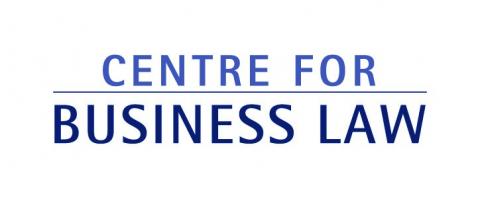How did you begin teaching at Allard?
After reaching the tenth anniversary of my law school graduation, I was at the point in my career where I was ready to teach what I had learned to the next generation of lawyers. I began by giving guest presentations for courses at Allard and other law schools. This ultimately led to the opportunity to teach insolvency law at Allard in 2022, which was a fantastic experience. I was eager to return and expand my teaching to two courses, as not only did I enjoy teaching, but it also improved my legal practice.
How has teaching improved your legal practice?
I have been learning from both my preparation for teaching and my students. As litigators, we often focus on the facts and results of specific cases without stepping back to consider the general theory behind our practice area or areas not directly involved in our cases. To teach a full course, I needed to read deeply on both the core principles of insolvency law and creditors’ remedies, as well as certain topics I had not encountered in my practice. This was necessary to understand and then break down the material into comprehensive pieces for my classes. In turn, the questions and insights from my students have increased my own knowledge and understanding. Overall, I have witnessed a positive impact on my legal practice, as I have worked with an academic perspective useful for my client and the court.
What is your approach to teaching?
My classes combine theoretical knowledge with practical applications. A significant portion of class time is dedicated to active learning exercises, where students engage with fact patterns in groups or as a class to develop their legal analysis and advocacy skills by arguing both sides of an issue. I learned the importance of including active learning activities while completing UBC’s Teaching Development Program. Overall, my goal is for students to not only learn what the current law is, but to develop their own views on what it should be and how to get it there.
One of the highlights of my courses is the oral presentation at the end of the term, where students present on a legal case they disagree with and explain how they would attempt to distinguish it in the future. This exercise allows them to apply the theoretical knowledge and perspectives they have developed throughout the term to a practical situation experienced by all litigators: navigating difficult case precedents. While I understand that not all of my students will work as litigators or lawyers, they will develop transferable skills that are valuable in any career after law school.
Why should students consider taking insolvency law or creditors’ remedies?
Insolvency law is an area of law everyone should gain a basic understanding of, because no matter what area of law you work in, there is always the potential impact of your client (or the opposing side) becoming insolvent. The impact of federal insolvency law often overrides common law or provincial legislation. In the course, we consider the full spectrum of cases, from small personal insolvencies to the largest cross-border corporate insolvencies. Students grapple with issues such as the tension between utilitarianism and law, the roles of Parliament and the courts, and procedural fairness in what are often fast-moving insolvency proceedings.
The focus of creditors’ remedies is on the options available to unsecured creditors for enforcing their monetary claims and the impact of competing unsecured and secured creditors. While much of law school emphasizes the process leading up to obtaining a judgment, this course concentrates on what actions may be taken with that judgment when the debtor does not or cannot comply. This involves drawing upon concepts learned in various first-year law courses, including contracts and property law. When viewed from the perspective of an unsecured creditor, the two courses are two sides of the same coin: one focuses on the pre-insolvency situation, while the other covers the impact of the insolvency regime.
I have heard that you refer to birds in your lectures?
Yes, this is another approach emphasized in the Teaching Development Program: finding ways to take a personal approach to teaching and make learning fun for students. I have integrated the birdwatching and bird photography that my spouse and I enjoy into my teaching. I include several amusing bird photos in each week’s slides, using them to illustrate various concepts, from creditors competing over the limited assets of a debtor to the doctrine of federal paramountcy. This inclusion of birds has, I believe, brought enjoyment and delight to my students.
Published Summer 2024

